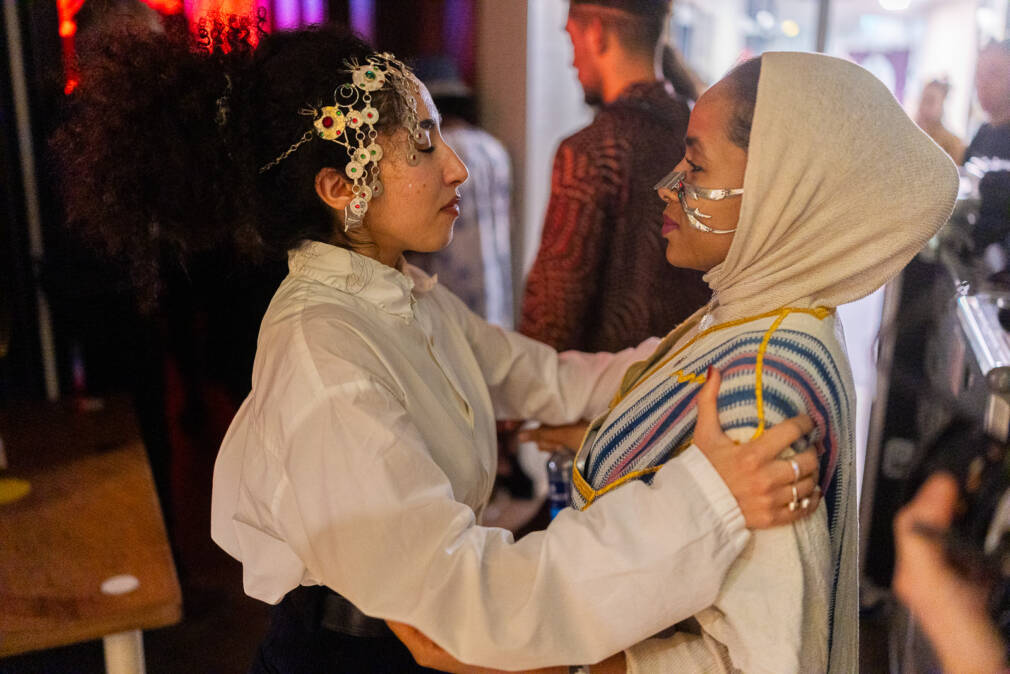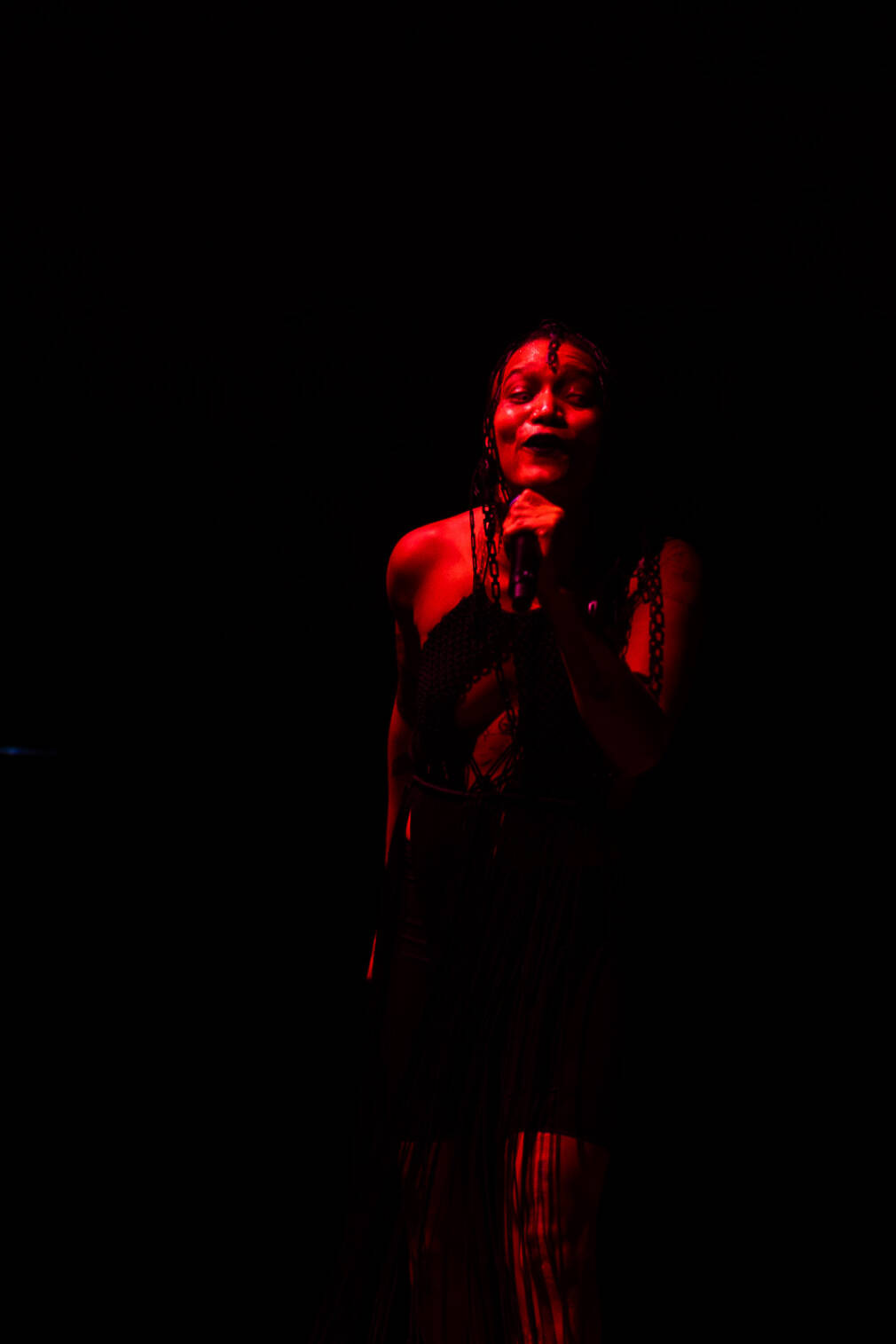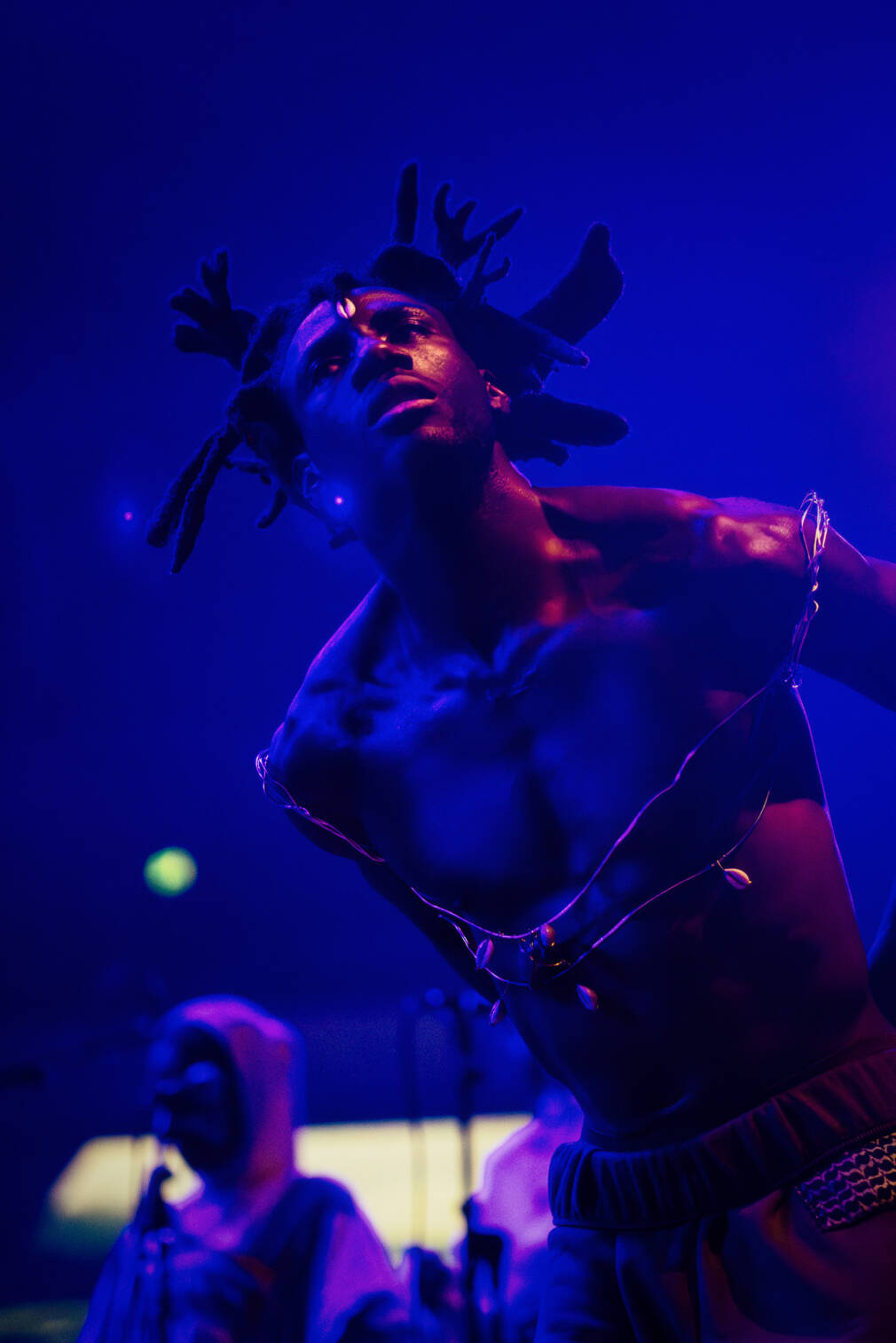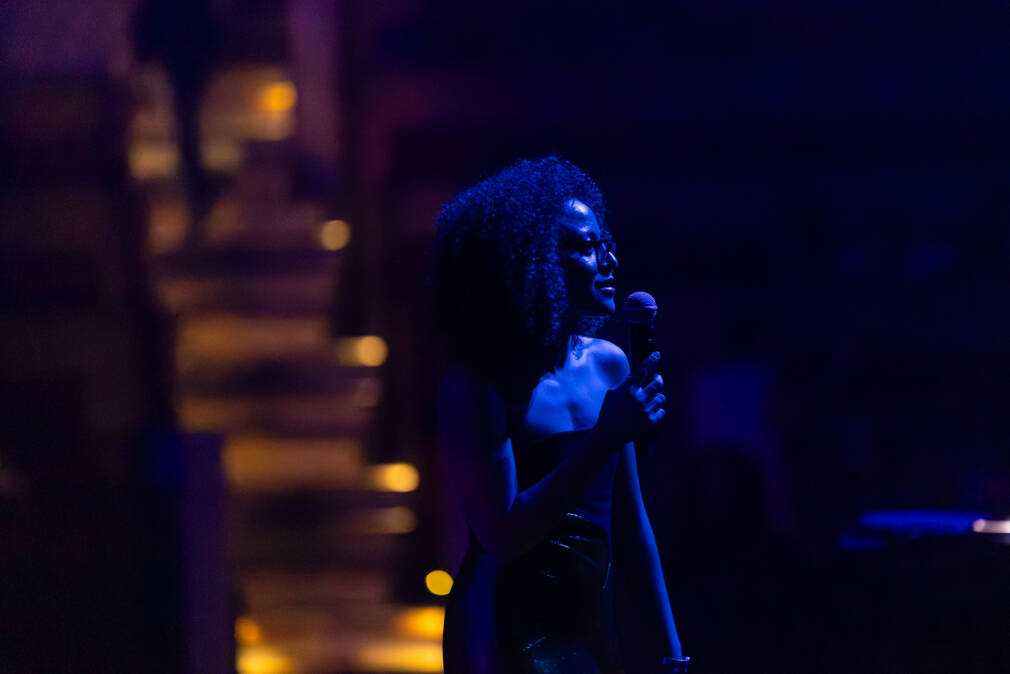The history of music is not subordinate or arborescent. On the contrary, it is without center, polymorphous and developing randomly. Hannah Elsisi’s conceptual premise is based on a simple debate between friends: Did Rosalía, a European-born global pop hyperstar, build her career on the cultural reappropriation of Afro-descendant rhythms? A seemingly simple discussion, coupled with an ongoing court case pitting Jamaican duo Steely & Clevie against music industry giants Warner, Universal and Sony.
To put it simply, according to the producer duo, their 1989 riddim “Poco Man Jam” contains the original DNA of reggaetón. It’s led to a major copyright infringement battle, since this rhythm is contained in the hundreds of hits that have been hovering at the top of the world’s top albums for years. It’s a seductive lead, as everyone knows and feels that Bad Bunny and Drake’s “MIA” or Dj Snake’s “Taki Taki” draw heavily on African polyrhythms: “I find this lawsuit an interesting entry point for tackling the question of capitalism in music, that of the dynamics of circulation and appropriation of rhythms, but also of their capture by white, colonial liberalism. This case lays bare how the Western question of copyright has generated a whole ecosystem, as well as a legislative system, at the service of a domination, that of a colonial and cultural capitalism, which eludes an entire continent and its diaspora,” explains the British-Egyptian historian.

“My rhizome is a mangrove”
In relation to this monstrous narrative, legislative, and symbolic matrix, which stratifies and freezes musical creation, Hannah Elsisi contrasts the Caribbean experience: a place of trauma, individual and collective suffering and uprooting, but also a place of crossroads, encounters and the hopes of being. In the face of pyramidal and arborescent creative industries, with their hierarchies of roots, trunks and indestructible peaks, Hannah Elsisi offers a counter-model of musical creation that is hybrid, subterranean and mixed-race. A decolonial vision of the history of music, which resists and unfolds in the insubordinate manner of a rhizome: “the same rhizome developed by Gilles Deleuze and Félix Guattari in Mille Plateaux” explains the intellectual. “But my rhizome is a mangrove.“
Mangrove is the name of a research unit co-founded by Elsisi at New York University. It’s a program that studies the languages, biotopes, sounds, and the aesthetics of migration. A vast project at the heart of which Hannah is developing Chromesthesia. “Chromesthesia, or how Afro-descendant music permeates contemporary creation like a rhizome. From Rio to Cairo, Miami to Kampala, Chromesthesia probes a millennium of diasporas, following the soundscapes of migration and creation in exile,” comments Hannah. “Dancehall, baile funk, amapiano, mahraganat, electro-shaabi, raptor house or reggaetón, to be precise, are international, contemporary and major genres, born of the chaos of Afrodescendants’ displacements due to war, climate change, economic collapse, wars as well as slavery.”

An archive compilation for “unwritten stories”
The long-running Mangrove and Chromesthesia programs are now taking shape at the end of 2024. First, in the form of a nine-track compilation: released in November 2024, CHROMESTHESIA: The Colour of Sound Vol. 1 which brings together some twenty artists from the various sonic archipelagos conceptualized by Hannah Elsisi. An impressive compilation, by way of archive, for “unwritten histories”. To embody African memories that are prevented and sometimes forbidden, the intellectual summons the most illustrious ambassadors of demanding, internationalist and enlightened bass music. It’s hardly surprising that the first part of the album opens with the polyrhythms of Deena Abdelwahed, a Tunisian electronic artist who never ceases to tear apart sonic abstractions and creative territories in motion. Chromesthesia also features South African lyricist Sho Madjozi, the seminal queen of Limpopo; Pedro Elias Corro, aka DJ Baba the Raptor, absolute godfather of the underrated raptor house scene; and 3Phaz, a pillar of the Cairo electronic scene, who teams up for the occasion alongside fellow Egyptian-Iranian artist KUKII. KUKII, known to many under her former alias LAFAWNDAH, is a neo-digital diva who we’ll be talking to via PAM very soon.
Hannah Elsisi’s nebula has also recently been revealed on stage: to celebrate the release of her impressive curation, the historian staged a vast thirteen-hour performance on the stage of the Le Guess Who? festival in Utrecht. On the menu for this feast of sound? A veritable take-over of the Dutch event’s programming, with DJ Lag’s gqom, the arrival of godfather DJ Babatr, and live performances by 3Phaz x KUKII, Sho Madjozi and our beloved PÖ, well known to supporters of the Ugandan collective Nyege Nyege. The entire choreographic direction of this exclusive live version of the Chromesthesia experience was under the expert guidance of Exocé, a French performer of Congolese origin and hybrid visual artist, also nourished by the lights of Africa: “the experience of rhythm and polyrhythm is always collective,” adds Hannah Elsisi. “People have always gathered in circles, in groups, to heal each other. The African continent and its diaspora carry this ancestral history of rhythm in its therapeutic function, which is also what Chromesthesia tells us.”

Chromesthesia: the Colour of Sound Vol. 1, November 2024, feat. Sho Madjozi, Nick León, Deena Abdelwahed, 3Phaz, LAFAWNDAH, DJ Babatr and more…
Artists, producers and musicians, would you like to take part in the second part of the Chromesthesia collection? Contact [email protected]
